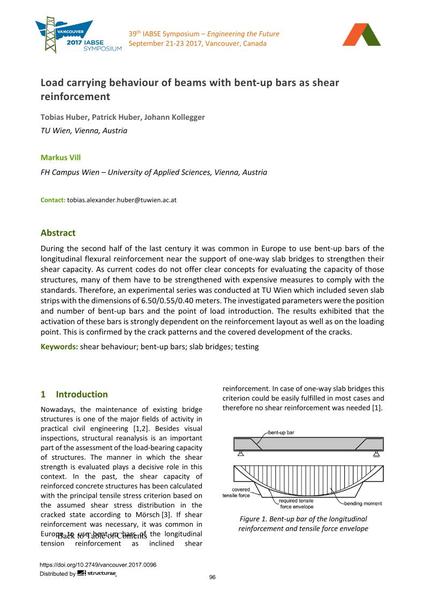Load carrying behaviour of beams with bent-up bars as shear reinforcement

|
|
|||||||||||
Détails bibliographiques
| Auteur(s): |
Tobias Huber
(TU Wien, Vienna, Austria)
Patrick Huber (TU Wien, Vienna, Austria) Johann Kollegger (TU Wien, Vienna, Austria) Markus Vill (FH Campus Wien – University of Applied Sciences, Vienna, Austria) |
||||
|---|---|---|---|---|---|
| Médium: | papier de conférence | ||||
| Langue(s): | anglais | ||||
| Conférence: | IABSE Symposium: Engineering the Future, Vancouver, Canada, 21-23 September 2017 | ||||
| Publié dans: | IABSE Symposium Vancouver 2017 | ||||
|
|||||
| Page(s): | 96-101 | ||||
| Nombre total de pages (du PDF): | 6 | ||||
| Année: | 2017 | ||||
| DOI: | 10.2749/vancouver.2017.0096 | ||||
| Abstrait: |
During the second half of the last century it was common in Europe to use bent-up bars of the longitudinal flexural reinforcement near the support of one-way slab bridges to strengthen their shear capacity. As current codes do not offer clear concepts for evaluating the capacity of those structures, many of them have to be strengthened with expensive measures to comply with the standards. Therefore, an experimental series was conducted at TU Wien which included seven slab strips with the dimensions of 6.50/0.55/0.40 meters. The investigated parameters were the position and number of bent-up bars and the point of load introduction. The results exhibited that the activation of these bars is strongly dependent on the reinforcement layout as well as on the loading point. This is confirmed by the crack patterns and the covered development of the cracks. |
||||
